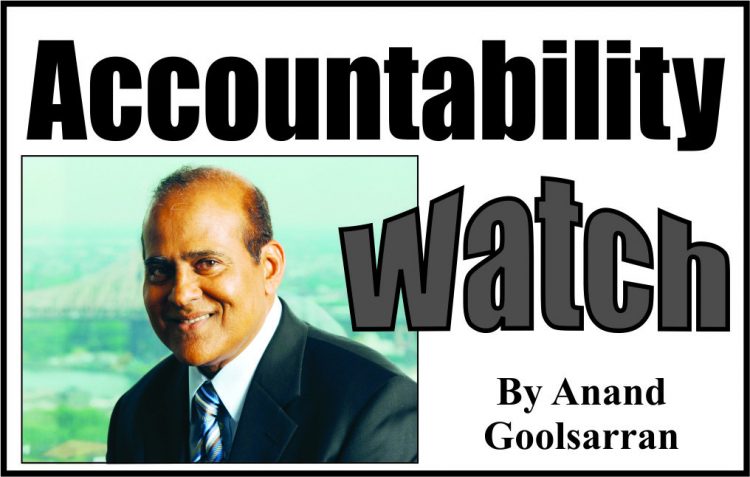 A recently released report found that within an area from Texas to Louisiana in the United States, residents could experience “heat index” temperatures above 125 degrees Fahrenheit by 2053. A total of 107 million people are at risk. The heat index is what a temperature feels like to the human body when humidity and air temperature are combined. Last month was the country’s third-hottest July since record-keeping began some 130 years ago. About 8.1 million U.S. residents in 50 counties are currently at risk of experiencing heat index temperatures over 125 degrees. See https://www.yahoo. com/news/u-could-see-extreme-heat-040100180.html.
A recently released report found that within an area from Texas to Louisiana in the United States, residents could experience “heat index” temperatures above 125 degrees Fahrenheit by 2053. A total of 107 million people are at risk. The heat index is what a temperature feels like to the human body when humidity and air temperature are combined. Last month was the country’s third-hottest July since record-keeping began some 130 years ago. About 8.1 million U.S. residents in 50 counties are currently at risk of experiencing heat index temperatures over 125 degrees. See https://www.yahoo. com/news/u-could-see-extreme-heat-040100180.html.
Over in East Africa, the World Health Organization warned that over 50 million people will face the threat of starvation this year due to drought, climate change, rising prices and an ongoing civil war in northern Ethiopia. About seven million children are suffering from malnourishment and hundreds of thousands are leaving their homes in search of food or livelihood. The countries affected include Djibouti, Ethiopia, Kenya, Somalia, South Sudan, Sudan and Uganda. See https://www.yahoo.com/news/millions-in-east-africa-face-starvation-due-to-drought-192747275.html.
In today’s article, we discuss the auditing of the post-contract costs incurred by ExxonMobil and charged as recoverable costs for the purpose of arriving at profit oil. It will be recalled that 75 percent of such costs in any one month is to be deducted from the value of crude oil produced in that month. The remaining 25 percent is to be shared equally between Exxon and the Government of Guyana.
Concerns about possible inflation of recoverable costs
In its report titled “Guyana: A Reform Agenda for Petroleum Taxation and Revenue Management” dated November 2017 and commissioned by the Minister of Finance, the IMF considered that the absence of ring-fencing provisions is a key weakness in the Petroleum Agreement between ExxonMobil’s subsidiaries and the Government of Guyana dated 27 June 2016. A ring-fencing arrangement ensures that only costs attributable to a particular field are taken into account in the computation of profit oil for that field. Although the Agreement provides for the sharing of profit oil on a field by field basis, it also allows Exxon to allocate cost oil to any field within the contract area, thereby defeating the main purpose of ring-fencing. This arrangement is likely to benefit contractors with multiple fields within their contract area at the expense of delaying government revenue.
The IMF also stated that there are too many loopholes, which if not plugged, could result in Guyana losing significant amounts of revenue; and strong leadership in government is needed to ensure that the interest of the State is properly safeguarded. Considering these and other concerns, a comprehensive auditing of the post-contract recoverable costs assumes greater significance.
Auditing and inspection rights
Section 1.5 of Annex C of the Agreement provides for the audit and inspection rights of the Government. The Minister is required to give 90 days’ notice of the Government’s intention to audit the accounts of Exxon’s subsidiaries for each calendar year. The audit is to be conducted within two years of the close of the year.
The Minister may review items previously subjected to audit in earlier years. However, such a review must be only for verifying a matter arising in a later period which relates to the earlier year(s) in question. The review must also be carried out in conjunction with the annual audit and no sooner than 12 months following the previous audit. At the end of the review, the parties shall endeavour to resolve the outstanding matters, and a written report is to be submitted to Exxon within 60 days of the conclusion of the review.
Exxon is required to reply not later than 60 days following the receipt of the report indicating acceptance or rejection and providing explanations in the event of the latter. The Minister has a right to carry out further investigation within 60 days of Exxon’s response. If the parties are unable to reach agreement, the Minister’s claim is referred to the sole expert in accordance with Article 26 of the Agreement. If the audit claim is not settled, Exxon is entitled to recover the disputed amount pending final resolution of the claim.
In November 2021, the Government had stated that it was unable to audit the post-contract recoverable costs because it could not identify a strong group of local auditors to undertake the assignment. According to the Vice President:
We have been very disappointed that we have not been able to select a group to do the audit …The reason is we did not have a strong local content. We had two local groups that came in but they were not strong enough. We want to build a capacity in Guyana to do this audit.
We think our people have enormous skills, forensic skills, auditing skills, and we are looking to see if we can’t have an arrangement where we have a consortium of local people partnering with a foreign company so we can build capacity right here in Guyana. We are disappointed that from the individual bids we did we have not been able to do this.
The audit of the post-contract recoverable costs is necessary to provide the reasonable assurance that expenditures incurred are legitimate recoverable costs in the context of the Agreement; and the amounts involved are reasonable and represent good value for money. This especially so, considering the higher the recoverable costs, the less will be the amount of Guyana’s share of profit that will accrue to it. Exxon has nevertheless indicated that it would not enforce the two-year timeframe, presumably to give the Government more time to select the auditors.
Recoverable contract costs
Article 11 of the Agreement provides for Exxon to bear and pay all contract costs incurred in carrying out petroleum operations and shall recover such costs as recoverable contract costs only from cost oil and/or cost gas. Contract costs are all those costs relating to exploration, development, operations, service, general and administration as well as annual overhead charge, but excludes pre-contract costs.
Recoverable contract costs are to be applied to the value of crude oil (cost oil) produced and sold from the contract area in any one month and are limited to 75 percent of production for that month. Unrecovered costs are to be carried forward to the following month. The remaining 25 percent of production and sale for each field (profit oil) is to be shared equally (i.e. 50/50) and on a monthly basis between Exxon and the Government of Guyana.
Exxon may allocate the quantity of cost oil towards recoverable contract costs from any field or fields. It shall also have the right to use as much of the production as may be reasonably required, and the quantities so used or lost shall be excluded from the calculation of cost oil and profit oil.
Selection of a consortium of local auditors
Faced with criticisms from various quarters as regards the above statement on the audit of post-contract recoverable costs, the Government eventually got its act together and selected a consortium of local auditors to undertake the audit. The contract was awarded in the sum of US$751,000 to Ramdihal & Haynes Inc., Eclisar Financial, and Vitality Accounting & Consultancy Inc., with technical support and expert assistance from the international firms of Martindale Consultants Inc. and Squire Paton Boggs. The assignment covers the period 2018 to 2020. It is, however, unclear why the 18-month period from July 2016 to 31 December 2017 was not included.
Local Content Act and the recruitment of local auditors
There has been the suggestion that the audit contract may have breached the Local Content Act because of the SGC and Martindale Consultants’ involvement. The First Schedule of the Act sets out the minimum requirements that a contractor, sub-contractor or licensee must adhere to for local content levels in relation to the procurement of goods and services as well as local capacity development. For local auditing, there must be a minimum of 90 percent local participation. However, this requirement is not applicable since it is the Government that recruited the consortium of local auditors, and not Exxon’s subsidiaries.
Status of the audit
The audit contract was entered into on 25 May 2022 and is to last for four months, with a commencement date of 29 June 2020. With a little over two months to go, the auditors would have completed much of the field work, and should be in the process of analysing of the data collected before proceeding with the drafting of the report. It is indeed a tight schedule that involves, among others, a certain amount of training of the auditors before the actual audit commences; documenting and evaluating systems and procedures; test-checking to confirm the accuracy of the documentation; testing of the controls in place; conducting risk analysis and assessment to determine priority areas for audit focus; substantive testing of transactions and balances; conducting analytical review procedures; drafting of the report and discussing the same with the relevant authorities; and issuing the final report.
Given the scope of the work that involves examining 36 months of expenditure statements and supporting documents as well as public expectation that a thorough audit will be delivered, it would have been more comforting if the assignment had taken place over a six-month period. One hopes that the auditors will not cut corners in order to meet the deadline, and should not hesitate to seek an extension if it is considered necessary.
According to Floyd Haynes, the head of the consortium, the auditors have been working assiduously at information gathering and have held a series of meetings with Exxon. He stressed that the exercise is not a witch hunt but rather one that seeks to verify the ‘validity and allowability of claimed costs’ in the context of the Petroleum Agreement. Mr. Haynes, however, warned against the expectation that the audit will uncover inflated costs, contending that this needed to be tempered. He further stated that ‘[t]he idea that Exxon has been overbilling and overcharging, is grossly misleading and it is not fair to mislead the public. We don’t know what we will find, but we will ensure that the costs are legitimate and allowable.
The penultimate statement by Mr. Haynes appears contradictory, especially when compared with the last statement, in that he was able to draw a conclusion about ‘overbilling and overcharging’ when the audit has not progressed sufficiently for him to make that determination. During the course of an audit, auditors must display a sense of professional skepticism and must not rush to draw conclusions, especially those favourable to the auditee, without first making sure that they have conclusive evidence to support those conclusions. What if it turns out that evidence has been uncovered of overbilling and overcharging? The auditors should very well be advised to refrain from making pronouncements about the audit results and let the report speak for itself.
Auditing of the pre-contract costs
Annex C of the Agreement states that the amount of US$460,237,918 refers to costs incurred in petroleum operations pursuant to the 1999 Agreement up to 31 December 2015. The Annex further stated that Exxon is to be reimbursed ‘such costs as are incurred under the 1999 Agreement between January 1, 2016, and the effective date which shall be provided to the Minister or on before 31 October 2016 and such number agreed on or before 30 April 2017’. It is estimated that an additional US$500 million was expended during the period 1 January to 26 June 2016, giving a total pre-contract costs of approximately US$960 million to be charged as recoverable contract costs. This is in the light of the bridging agreement that links the 1999 Petroleum Agreement with that 2016.
The audit of the pre-contract costs was undertaken by the UK firm IHS Marketing and the related report was issued to the Government. However, the results are yet to be made available to the public. In November 2020, the Commissioner-General of the Guyana Revenue Authority had stated that the report was handed to the Department of Energy to be forwarded to Exxon for its response. In January of this year when the matter was raised in the National Assembly, the Minister of Natural Resources had stated that the audit remained incomplete. We call on the Government to clarify whether the audit has since been completed, and if so, when will the results be released to the public?








